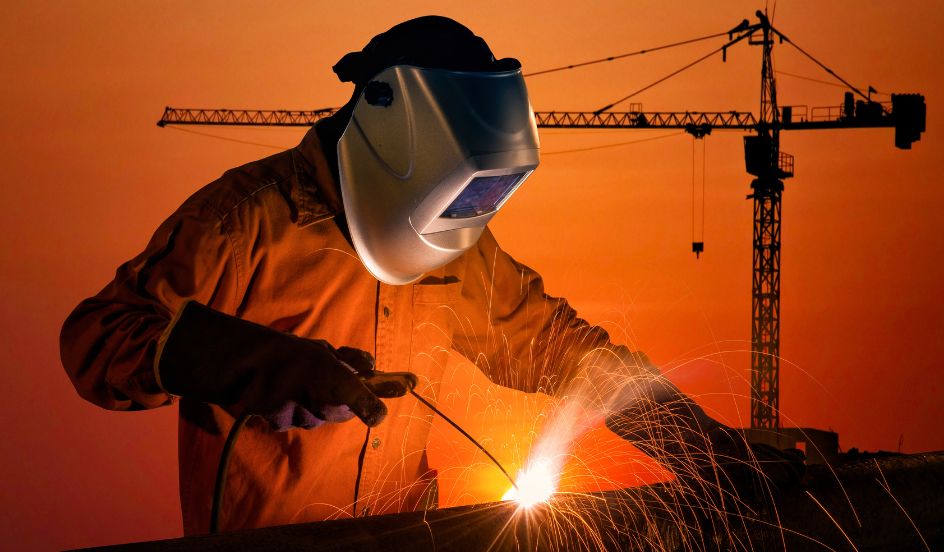Welding WPS Explained: Secret Components and Conveniences for Your Welding Processes
Welding WPS Explained: Secret Components and Conveniences for Your Welding Processes
Blog Article
The Ultimate Overview to Welding WPS Procedures: A Comprehensive Introduction for Welders
In the intricate world of welding, Welding Procedure Specs (WPS) work as the foundation of ensuring high quality, uniformity, and safety and security in welding procedures. Understanding the nuances of producing, executing, and monitoring WPS treatments is crucial for welders aiming to boost their craft and fulfill market criteria. As we delve into the various parts of a WPS and explore the complexities of certification and qualification, we will certainly reveal the essential duty these treatments play in the world of welding. Let's begin on a journey to decipher the complexities and importance of WPS procedures in welding practices.
Importance of WPS Procedures
Recognizing the relevance of Welding Procedure Specifications (WPS) treatments is vital for making sure the high quality and integrity of bonded structures. WPS procedures function as a roadmap for welders, laying out the needed steps, criteria, and products required to accomplish an audio weld. By sticking to WPS guidelines, welders can make sure consistency in their job, bring about reliable and structurally audio welds.
One of the primary reasons why WPS treatments are essential is their duty in keeping weld quality and integrity. Complying with the specified welding specifications and strategies outlined in the WPS assists stop issues such as porosity, cracking, or incomplete combination, which can endanger the toughness and longevity of the weld.

Elements of a WPS
A Welding Treatment Spec (WPS) generally comprises crucial parts that detail the specific needs for carrying out a weld, guaranteeing consistency and top quality in the welding procedure. The vital components of a WPS include crucial variables such as base steels, filler metals, interpass and preheat temperatures, welding processes, shielding gases, welding settings, and post-weld warmth treatment needs.
Base steels refer to the products being joined, while filler steels are used to load the space in between the base metals throughout welding. Preheat and interpass temperatures are critical for managing the heat input and preventing problems like cracking or distortion. The welding process details the certain technique to be utilized, whether it's gas steel arc welding (GMAW), shielded metal arc welding (SMAW), or an additional technique. Protecting gases safeguard the weld swimming pool from atmospheric contamination. Welding placements specify the positionings in which welding can be executed. Post-weld heat therapy might be required to soothe anxieties and boost the weld's residential properties. A comprehensive understanding of these components is vital for producing a thorough and effective WPS.

Qualification and Qualification
Having developed the essential components of a Welding Procedure Specification (WPS), the focus now shifts towards the critical facets of qualification and certification in welding practices.
:max_bytes(150000):strip_icc()/MIG20welding20arc20in20action-2000-e8844d72f5094d408b5ab6f1c9436a4f.jpg)
Accreditation, on the various other hand, is the official acknowledgment of a welder's qualifications by an appropriate certification body or organization. Welding qualifications are normally based upon the specific welding processes, products, and placements a welder is certified to deal with. Holding a valid welding accreditation demonstrates that a welder satisfies market criteria and is skilled to carry out welding tasks to the called for specifications.
Developing a WPS
To establish a Welding Procedure Specification (WPS) that satisfies market requirements, mindful factor to consider of welding procedures, products, and operational parameters is important (welding WPS). The initial step in creating a WPS is to identify the welding process to be made use of, such as gas steel arc welding (GMAW) or shielded metal arc welding (SMAW) As soon as the welding procedure is figured out, the next important facet is choosing the appropriate materials, thinking about aspects like base steel kind, density, and joint design. Operational specifications such as welding present, voltage, traveling speed, and shielding gas composition should likewise be carefully specified in the WPS.

Executing and Monitoring WPS
Upon completing the comprehensive Welding Treatment Requirements (WPS) that carefully details welding procedures, products, operational specifications, and quality guarantee measures, the emphasis shifts to successfully implementing and checking the find recognized treatments. Implementation entails ensuring that all welders entailed in the project are acquainted with the WPS and follow it meticulously throughout the welding process. Efficient implementation and tracking of the WPS are crucial for guaranteeing the honesty, stamina, and safety of the welded joints, eventually contributing to the total success of the welding project.
Conclusion
To conclude, understanding and adhering to Welding Procedure Specs (WPS) is essential for welders to make sure quality, consistency, and security in their job. By knowing site link the elements of a WPS, acquiring correct qualifications and qualifications, creating thorough treatments, and carrying out and monitoring them efficiently, welders can improve their abilities and effectiveness in welding practices. Adhering to WPS procedures is necessary for generating premium welds and conference industry requirements.
In the elaborate world of welding, Welding Treatment Specifications (WPS) offer as the foundation of making certain top quality, uniformity, and security in welding operations. The welding procedure outlines the certain method to be made use of, whether it's gas metal arc welding (GMAW), secured steel arc welding (SMAW), or an additional technique.To establish a Welding Treatment Spec (WPS) that satisfies market requirements, cautious consideration of welding processes, materials, and operational criteria is crucial. The initial action in developing a WPS is to determine the welding process to be utilized, such as gas metal arc welding (GMAW) or secured steel arc welding (SMAW)Upon settling the thorough Welding Procedure Requirements (WPS) that meticulously details welding procedures, materials, functional criteria, and high quality assurance procedures, the emphasis shifts to efficiently executing and keeping track of the established treatments.
Report this page